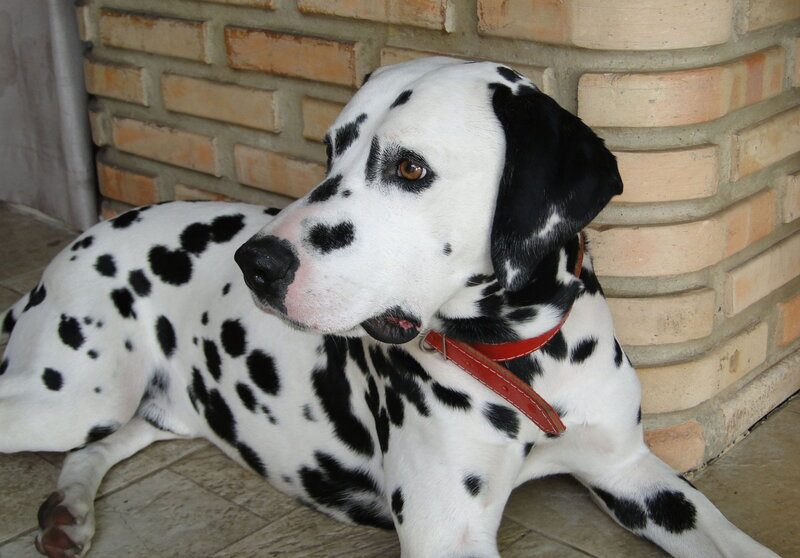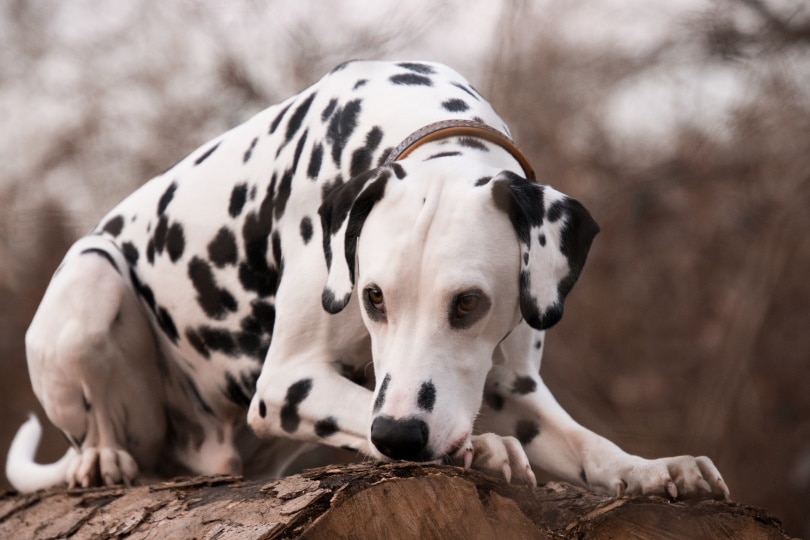In this article
Dalmatians have unique coat patterns and lively personalities. They are also popular in books and movies, such as Disney’s “101 Dalmatians.” However, one health concern that many people have about this popular breed is their supposed predisposition to deafness. Unfortunately, it is true that many Dalmatians suffer from hearing loss, but thanks to the screening and selective breeding measures, this is nowadays much less common than before. Here, we discuss how serious this issue is and if there is any way to prevent it.

Prevalence of Deafness in Dalmatians
Deafness is a relatively common condition in Dalmatians; experts estimate that approximately 30% of Dalmatians in the U.S. are born deaf in one or both ears. This percentage is significantly higher compared to other dog breeds. Roughly 22% of Dalmatians have deafness in one ear, while 8% are deaf in both ears.¹

Causes of Deafness
Congenital sensorineural deafness (CSD) is the most common type of deafness in dogs and it develops in the first 3–4 weeks after birth. Dalmatians are the dog breed most commonly affected by CSD. Genetic mutations that affect the development of the structures responsible for hearing in the inner ear are responsible for the condition. The gene involved in Dalmatians’ deafness is called the extreme piebald gene, which is also responsible for their patchy coat patterns and blue eyes.
If you suspect your pet is becoming deaf, you should contact your vet directly for an assessment. They can provide you with more information and a care plan.
If you need to speak with a vet but can't get to one, head over to PangoVet. It's our online service where you can talk to a vet online and get the advice you need for your dog — all at an affordable price!

Inheritance Patterns
Deafness in Dalmatians follows an autosomal recessive inheritance pattern, which means both parents must carry the gene for deafness for their offspring to be affected. However, even if only one parent has the gene, the puppies may still be carriers themselves, though they may hear fine. Breeding two carriers together increases the chances of producing deaf puppies, which is why eliminating the disease is so hard.


Decreasing the Risk of Deafness
Fortunately, one study that analyzed 26 years of data shows that fewer Dalmatians have been born deaf over the last few years due to careful breeding practices that look at other factors besides lineage, like the presence of blue eyes when determining suitable dogs for breeding. According to the study, this practice has reduced the number of deaf dogs by more than a third, with dogs deaf in one ear falling by more than 25% and dogs deaf in both ears falling by 50%.
Identifying Deafness
Deafness in Dalmatians can be challenging to identify, especially when it affects only one ear. Puppies that are deaf in both ears are more easily recognized because they do not respond to auditory stimuli. However, it is crucial to diagnose deafness early to ensure appropriate care and training. The most common method to identify deafness in Dalmatians is the brainstem auditory evoked response (BAER) test, which measures the brain’s electrical activity in response to sound stimulation. It can determine whether a Dalmatian is deaf and if so, the extent of their hearing loss.


Managing Deafness in Dalmatians
- Training and Communication – Deafness does not hinder a Dalmatian’s ability to live a fulfilling life. With proper training and communication techniques, deaf Dalmatians can lead happy and healthy lives. Instead of relying on verbal commands, owners can use visual cues, hand signals, and positive reinforcement training methods to communicate with their deaf Dalmatians effectively.
- Safety – Deaf Dalmatians require additional safety measures, particularly outside or in unfamiliar environments. They cannot hear warning signals or commands, so keeping them on a leash or within a securely fenced area is crucial. A reflective collar or vest can make them more visible, ensuring their safety during walks or outings, and a microchip can help you get them back if they get lost.
- Healthcare Considerations –Regular veterinary check-ups are essential for all Dalmatians, including those with deafness. Dalmatians are prone to other health problems, such as urate urinary calculi or stones, atopic dermatitis, and hypothyroidism and routine vet checks and timely medical intervention can help manage these conditions with less serious consequences. Discuss your Dalmatian’s specific needs with your veterinarian to ensure that they receive appropriate care.
Breeding Practices and Prevention
Responsible breeding practices are crucial to reduce the incidence of deafness in Dalmatians. Most experts recommend that you avoid breeding two Dalmatians that have a history of deafness or are known carriers of the piebald gene. Breeding a deaf Dalmatian should be avoided altogether to prevent passing on the genetic mutation. Genetic testing can help identify carriers of the piebald gene, enabling breeders to make informed decisions when selecting mating pairs, thus helping to reduce the incidence of deafness in future generations.
Education and Awareness
Educational materials, workshops, and online resources can provide valuable information about deafness in Dalmatians, including how to identify deafness, training techniques, and management strategies that can make parenting one of these special animals easier.


Summary
Many Dalmatians are born deaf in one or both ears, with as many as 30% being affected traditionally in the U.S. Fortunately, careful breeding practices that look for other traits besides hearing loss in the parents, such as blue eyes and a patch of color on their head, can help eliminate potential breeding partners that might contribute to hearing loss, which has helped lower the incidence rate of new puppies by more than 1/3 in recent years. If you have a deaf Dalmatian, they can still make a wonderful pet; they just need extra training and increased consideration on your part.
Featured Image Credit: Alexander Hagseth, Shutterstock




















